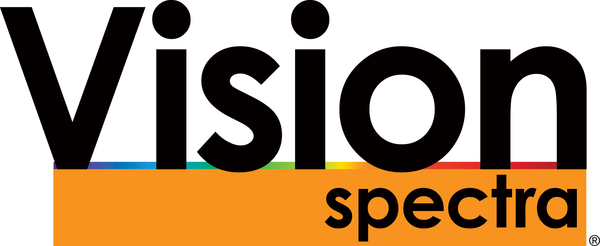Machine Vision Improves Measurements of Farmed Fish
Fish farmers rely on accurately tracking fish growth and assessing when to harvest them, which poses a difficult challenge. Due to improvements in vision technology, image processing, and enhancements in AI, these tasks have gotten easier, benefiting both producers and consumers of seafood.A case in point is from Creative Salmon of Tofino, British Columbia, Canada, a producer of organic Chinook salmon, also known as king salmon. Creative Salmon products are certified organic to the Canadian standard, and the Chinook salmon is indigenous to the Pacific. This species is more prone to stress by handling than the more commonly farmed Atlantic salmon, which can lead to slower growth, smaller fish, infections, and less output.
Creative Salmon staff harvest the company’s farmed, certified organic Chinook salmon. The timing of the harvest is determined, in part, through machine vision analysis of fish size. Courtesy of innovasea.
Therefore, measurements of Chinook salmon must be taken with minimal handling of the fish on an industrial scale. All the fish in each pen, which can number in the tens of thousands, must be accurately assessed.
The company tracks fish growth using a model that accounts for food input, environmental conditions, and other parameters, and then predicts the resulting average fish size. Creative Salmon can estimate the number of fish in a pen, which enables the calculation of the overall biomass of all the fish in a pen. The model must be checked against reality a few times per year.
Creative Salmon has been using cameras for these validation measurements for 25 years. However, the old cameras were large and difficult to maneuver when lowered into and raised out of a pen. A larger issue was the labor involved; Creative Salmon staff would sort through all the captured pictures, deciding which ones contained suitable images. Using the selected images, staff manually measured the fish and then software determined the weight of the fish. Totaling up all the estimated fish weights led to the final estimate for biomass and served as a check of the model.
BiomassPro cameras on dock. Cameras running AI analysis tools accurately measure the size of fish in pens, helping fish farmers assess fish growth without handling the fish. Courtesy of innovasea.
BiomassPro can be stylized: AI software extracts fish size by pinpointing specific locations on fish in an image. Courtesy of innovasea.
According to Barb Cannon, biology and operations director for Creative Salmon, though this approach was fairly accurate, it was dependent upon the subjectivity of the individual performing the picture review and fish sizing because this would affect the average size assessment and the total biomass calculation. Another issue was the age of the system and the increasing maintenance cost and difficulty.
To address these problems, Creative Salmon began working with Innovasea, a supplier of technologically advanced aquatic solutions for aquaculture and fish tracking. Innovasea offers BiomassPro, a submersible product with a 2560 × 1440 2K resolution stereoscopic color camera system encased in a rugged enclosure. The system runs an AI model that estimates fish size and weight in real time, enabling rapid data collection and analysis.
In developing a solution, Creative Salmon and Innovasea adjusted the AI model to provide more accurate results by feeding the model actual measurements and weights of the species.
“We collected a lot of data points to create an algorithm specific to Chinook salmon,” Cannon said.
With the tweaked AI model in place, Creative Salmon ran validation tests, comparing the new approach to the old and both to actual harvest results.
“BiomassPro has performed incredibly well for Creative Salmon in providing spot-on biomass estimations over the last 12 months,” said Rafael Cordero, vice president of engineering at Innovasea. “The numbers they’ve seen from their actual harvests are almost identical to what BiomassPro projected,” he said.
A May 2023 press release put the accuracy between vision-enabled prediction and harvest results at 99.7%.
A benefit of the new technology is that the measurement and analysis of a full pen of fish takes an hour or two instead of a whole day. One consequence, according to Cannon, is that Creative Salmon now collects data more often. Another advantage is that staff can concentrate on other aspects of work instead of spending time taking and analyzing data.
Looking to the future, Cannon noted other areas in which AI might be beneficial, such as the analysis of fish behavior for improving fish health, and feed pellet detection to regulate feeding. For example, Innovasea offers a feed optimization solution that combines machine learning with species-specific data to track fish feeding behavior and alert operators when fish are getting full.
Creative Salmon is a small player in the salmon farming world, and so it is unlikely to be on the bleeding edge of technology.
“We like to see technologies developed and proven before we adopt them. We’re watching these AI developments very closely,” Cannon said.
LATEST NEWS
- Photoswitchable Biosystems Make Way for Intelligent Drug Delivery May 8, 2024
- ams OSRAM Sells Passive Optical Components Assets to Focuslight May 8, 2024
- Toku Adds to its Board: People in the News: 5/8/24 May 8, 2024
- Functional Materials Developer Meta Materials to Lay off 80% of Workforce May 7, 2024
- Luminar Restructuring Includes 20% Workforce Cut May 7, 2024
- Danish Authorities Approve Sale of NKT Photonics to Hamamatsu May 6, 2024
- Photonic Processor Boosts Multifunctionality for Next-Gen Networks and AI May 6, 2024
- Imec Venture Fund Launches with $323M May 6, 2024
